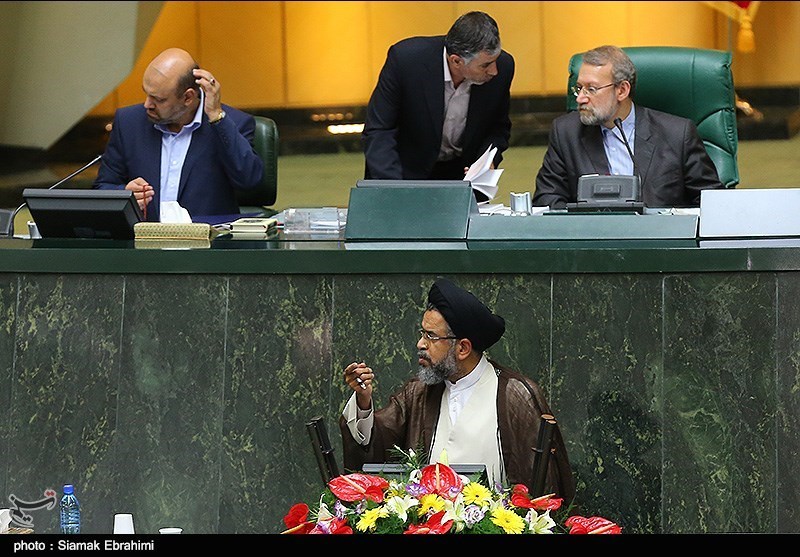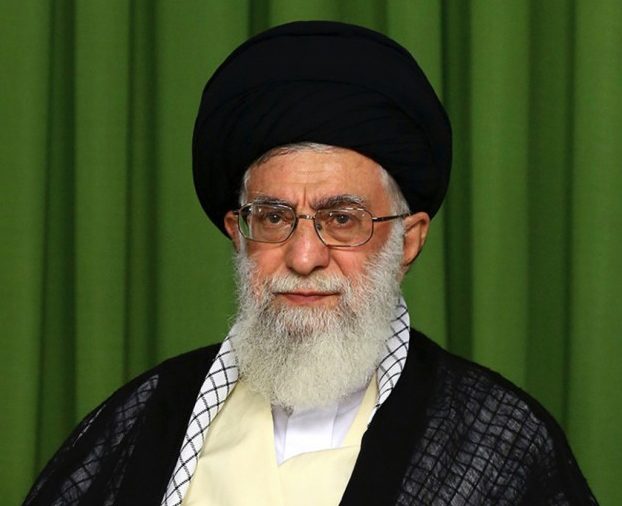June 16, 2017

The Islamic Republic has almost forgotten about the Islamic State as it puts its propaganda arms into overdrive to blame the United States for the attacks last week on the Majlis and Khomeini Mausoleum
Deputy Chief of Staff of the Iranian Armed Forces Major General Mostafa Izadi announced Sunday that Iran is in possession of evidence and documents proving Washington’s direct support for the terrorist group.
“We are facing a proxy war in the region as a new trick by the arrogant powers against the Islamic Republic,” Izadi said.
“We possess documents and information showing the direct support by US imperialism for this highly disgusting stream [the Islamic State] in the region which has destroyed the Islamic countries and created a wave of massacres and clashes,” he said.
He did not release any documents or say what they were. It is standard operating procedure in the Islamic Republic to claim to have documentary proof of something, but the documents are rarely if ever released.
Two days earlier, Majlis Speaker Ali Larijani said Washington is behind most terrorist acts in the world.
“The United States has aligned itself with Daesh in the region,” Larijani said Friday, addressing a funeral ceremony held for the victims of the terrorist attacks.
Throughout the establishment, officials have been lining up to damn the United States and say it was behind the attacks last Wednesday that killed 17 people.
They followed the lead of Supreme Leader Ali Khamenehi who referred to the attackers as “mercenaries” hired by the United States.
Security was beefed up all over Tehran. Three troopers from the Pasdaran were stationed at the entry to every Metro station where they checked bags and looked for suspicious activity.
Meanwhile, security camera footage was released that changed parts of the narrative about the attacks.
Footage from the mausoleum shows two men walking to the front gate, taking off backpacks and assembling rifles they carried in the backpacks. Last week, officials said the attackers were one man and one woman, but the video shows two bearded men.
Footage from a second camera inside the compound shows the riflemen coming across a man on the mausoleum grounds. He is startled to see the pair with rifles. But they do not shoot him. They just shoo him away and he just walks out of camera range unharmed, hinting that the men were perhaps less interested in blind bloodshed than in getting inside the mausoleum and perhaps attacking the burial site of Ayatollah Khomeini.
Security camera footage from the Majlis showed a similar procedure. The narrative last week said the four attackers dressed as women to enter the Majlis office building. But the footage shows all the attackers dressed as men. At the front door of the building, they take off their backpacks, quickly assemble rifles and charge through the door. Camera footage taken inside the door shows a man at the metal detector being shot at close range, apparently the first person killed. Here, the goal appeared to be shedding blood.
None of the men appear to have explosive vests, just ordinary sports shirts. But they carry backpacks and, after assembling their rifles, make a point of picking up their backpacks. It is possible the backpacks included bombs. At the mausoleum, a video shows a bomb going off. The authorities said one of the attackers at the Majlis set off a bomb on the fourth floor.
A number of the official comments on the terrorist attack emphasized that the attack showed the need for Iran tackling the Islamic State in Iraq and Syria, saying that otherwise Iran would have to fight the Islamic State inside Iran.
But the security authorities claimed they were already fighting the Islamic State inside Iran. Every few hours, there was an announcement of new arrests of Islamic State terrorists. As of Monday, the announced arrests exceeded 70. In addition, the police chief of Hormuzgan province said his officers had shot dead four men carrying the black flag of Daesh. He produced a photo of the body bags and the flag. It was the sole photo released of the police actions.
On Saturday, Intelligence Minister Mahmud Alavi said his men had just killed the “mastermind” behind the Majlis and mausoleum attacks. He did not name this person, saying only that he was in a border area when the attacks were launched and then crossed into a neighboring country, which he did not name, where he was killed “in collaboration with other intelligence services,” which he did not identify.
The repeated announcements of six terrorists arrested here and eight there painted a picture of security forces actively and successfully engaged around the country. But it also destroyed the argument that fighting Daesh in Syria and Iraq kept the threat away from Iran. It also served to unnerve the public.
Alavi may have become aware of that. On Sunday, he addressed the Majlis on the terrorism issue and assured the deputies that everyone associated with the terrorist cells that launched the attacks had been killed or arrested.
The next day, however, the Judiciary announced five more arrests of terrorists near Jask on the Persian Gulf coast.
Meanwhile, a Sunni cleric in Sistan va Baluchestan province told IranWire the Islamic Republic must fight extremism by ending discrimination against Sunnis in Iran, where they comprise about 10 percent of the population. Molavi Abdol-Majid Moradzehi said extremism was found among both Sunnis and Shias. “These people commit these acts as a result of wrong interpretations and brainwashing. They are fed up with the environment in which they live and with the tyrannies in the region,” he said.
As for the Sunnis in Iran, he pointed out that the governors general of Sistan va Baluchestan province have all been Shia and asked how it is that no capable Sunni can be located by the government.



















